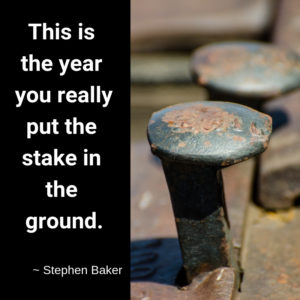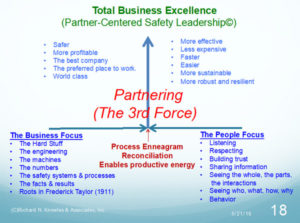 It is a new year. Businesses have compiled their 2018 safety statistics. They are looking at economics and at people. Who was hurt during this past year? What have we put in place so that those injuries won’t happen again? What are we talking about together for betterment? How did our systems contribute to our successes or to the injurie/s? What was the presence and the strength of Leadership support like around those people who were injured? Where are we most vulnerable safety-wise? How can we lead more effectively? How can we have an even safer workplace in this new year, 2019? How can we help employees to become more aware, more safety vigilant? And thus more able to return to their families at the end of the shift whole – with arms, legs, toes, fingers, eyes, ears – all intact. (Leaders, are you asking these questions?)
It is a new year. Businesses have compiled their 2018 safety statistics. They are looking at economics and at people. Who was hurt during this past year? What have we put in place so that those injuries won’t happen again? What are we talking about together for betterment? How did our systems contribute to our successes or to the injurie/s? What was the presence and the strength of Leadership support like around those people who were injured? Where are we most vulnerable safety-wise? How can we lead more effectively? How can we have an even safer workplace in this new year, 2019? How can we help employees to become more aware, more safety vigilant? And thus more able to return to their families at the end of the shift whole – with arms, legs, toes, fingers, eyes, ears – all intact. (Leaders, are you asking these questions?)
I don’t believe anyone wakes up in the morning and then upon entering the workplace plans on getting hurt that day. Nope. It doesn’t work that way. Rather, we go into work, we start our work, and our focus tends to wander from safety – inattentiveness – hurrying – trying to do two things at once – perhaps even emotionally upset at times. The result is that slips, falls, pinches, pinnings, caught between, run over, cuts, scrapes, and near-misses or worse scenarios come about. Somehow we drop the ball on being able integrate safety into the whole task from the initial safety reminders to the safety wrap-up at the end of the day. Even in-your-face safety signage doesn’t save the day.
It doesn’t have to be that way. Nope. Safety starts when YOU—the individual person takes a stand that YOU will work safe…all day. YOU will ask yourself where the biggest risks are and how you must prepare for them. YOU will watch out (as well), for your buddy and the newbie. YOU are an adult. YOU don’t want to have to wear a brace or a cast or bandage because of the pain and the inconvenience it’ll cause you. YOU don’t want to have to miss work or become a statistic. YOU will look out for booby-traps and surprises. YOU will be attentive to what is happening around you and with your specific task. YOU will be your own poster child for doing your work safely…because YOU want to…because it is the right thing to do, because YOU can think for yourself. YOU don’t need to have a safety prize for a reward, either. YOU decide to be safe…everyday, every moment, every task, constantly building on the good things you know and strengths you have. YOU make the decision!
Why am I beating this drum today for this newsletter? Because it is a clear aspect of Safety and Leadership. Until YOU can take a stand…a genuine stand…on YOUR own Safety, your head won’t be or stay in the game. And Leaders, Supervisors, Managers, CEO’s, you need to take your stand, too. Your stake has to be clearly and visibly in the ground. Your people need to know that you’ve taken your stance on safety and expect the same of them.
What does “taking a stand mean?” It means that not only will you publicly share that you recognize that YOU believe that working safely is important and something you must do, but you are, in addition, willing to ask all those you work with, to kindly hold you accountable to that stand. Will you do that? What’s your stand?
That’s the difference that makes the difference!

 In our November Safety Newsletter, I wrote about Partner-Centered Leadership. This is the most effective way to improve safety performance. This way of leading also results in improvements in most other aspects of the business as trust and interdependence are built and the environment is safe for the open flow of information. A key aspect of this is working with the people.
In our November Safety Newsletter, I wrote about Partner-Centered Leadership. This is the most effective way to improve safety performance. This way of leading also results in improvements in most other aspects of the business as trust and interdependence are built and the environment is safe for the open flow of information. A key aspect of this is working with the people.





